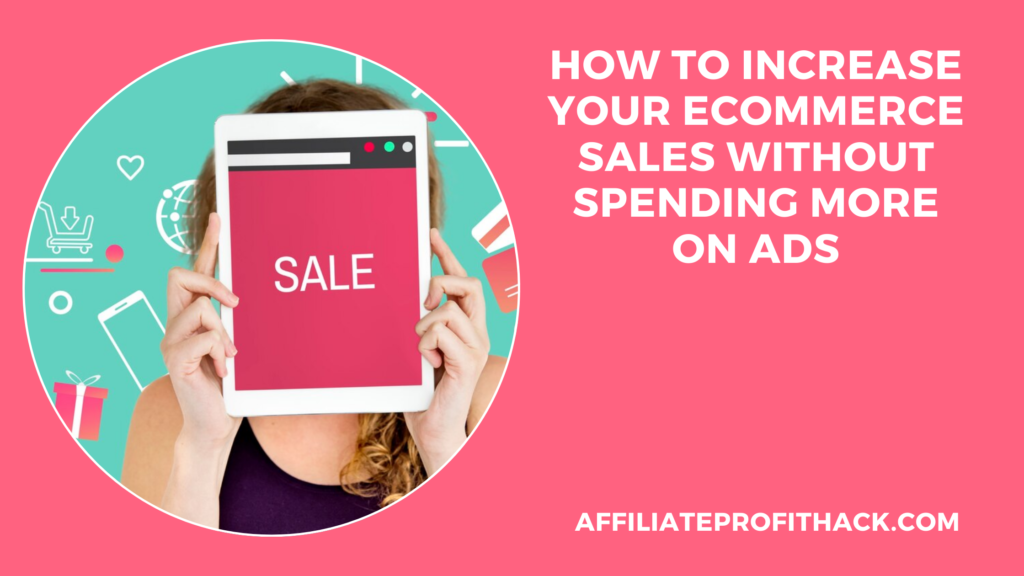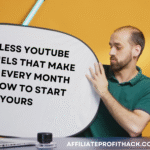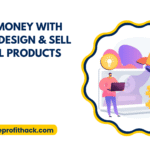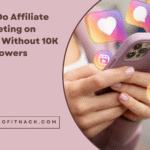Welcome to my article “How to Increase Your eCommerce Sales Without Spending More on Ads”.
Running an eCommerce business can sometimes feel like trying to keep a balloon afloat in a room full of pinpricks. The constant pressure to spend more on ads can be overwhelming, especially when you’re already feeling the pinch of advertising costs that seem to rise faster than your profits. But what if we told you that increasing your sales doesn’t have to mean pouring more money into ads? That’s right — you can actually boost your eCommerce revenue without adding a single extra penny to your advertising budget.
In this guide, we will show you proven strategies that help you drive more sales organically, focusing on making your website a conversion powerhouse, leveraging the power of email marketing, and tapping into the social proof that’s already working in your favor. These are strategies that require time and effort, but they’ll pay off in the long run, and the best part is, they don’t come with a hefty ad spend. So, if you’re ready to get serious about boosting your sales without breaking the bank on ads, let’s dive in!
My Best Recommended & Proven Way to Make $100-$300 Daily – Watch This FREE Video to START >>>

Optimize Your Product Pages for Conversions
Think of your product page as the salesperson who never sleeps. It’s working 24/7 to convince people to hit that “Add to Cart” button — so it better be doing a good job. If your product pages are vague, cluttered, or just plain boring, you’re leaving money on the table faster than a flash sale with no countdown timer.
Start with visuals. Humans are visual creatures — we want to see what we’re buying from every possible angle. High-quality images (and videos if possible) can make a huge difference. Include zoom features, lifestyle shots, and even customer-submitted photos if you’ve got them. If your product photos look like they were taken with a toaster, it’s time for an upgrade.
Next up: product descriptions. This isn’t the place to copy-paste manufacturer specs and call it a day. Use clear, benefit-driven language. Focus on how the product makes the customer’s life better, easier, or just a little cooler. And don’t be afraid to inject some personality — bland copy won’t inspire anyone to click “Buy Now.”
Trust is also a major factor. Add reviews, ratings, and testimonials front and center. Include trust badges, return policies, and shipping info without making the user dig through five tabs to find them. A little transparency goes a long way.
Finally, make the checkout process smooth. If your add-to-cart button is hard to find or the process requires solving a puzzle to complete the purchase, you’re going to lose sales. Simplify navigation, cut out unnecessary steps, and guide the customer like a good host guiding someone through a buffet: make it easy, make it appealing, and don’t let them leave hungry.
Leverage Email Marketing for Repeat Sales
If you think email is old-school, think again. While everyone’s busy chasing the next shiny social media hack, email quietly continues to deliver some of the highest ROI in the eCommerce world. It’s basically the overachiever in your marketing toolkit — low maintenance, cost-effective, and surprisingly good at bringing customers back for more.
First things first: build your list like it’s a VIP club. Don’t just offer 10% off and call it a day — give people a real reason to hand over their email. Think exclusive deals, early access to new products, or behind-the-scenes content. And once they’re in? Treat them like royalty.
My Best Recommended & Proven Way to Make $100-$300 Daily – Watch This FREE Video to START >>>
Now, let’s talk automation — your best friend when it comes to doing more with less. Set up an abandoned cart email sequence to gently (or not-so-gently) remind shoppers that they left something behind. You’d be surprised how many people just need a little nudge — or a reminder that their cart is not a wish list.
Next, send personalized product recommendations based on their browsing or purchase history. This isn’t just fancy marketing stuff — it shows your customer that you get them. And yes, people love feeling understood… especially when it leads to finding the perfect product they didn’t know they needed.
Don’t forget post-purchase follow-ups. A quick thank-you email can go a long way, and it’s the perfect chance to upsell, cross-sell, or just build loyalty. Think of it like checking in after a first date — but less awkward and more profitable.
And finally, keep the conversation going. Weekly or bi-weekly newsletters with updates, tips, or user-generated content can keep your brand top-of-mind without feeling spammy. Just remember: value first, sales second. Otherwise, you’re just that person at the party who only talks about themselves.
Improve Website Speed and User Experience (UX)
Let’s be honest — no one enjoys waiting for a website to load. In the age of instant gratification, if your store takes more than a few seconds to show up, your potential customer has already opened a new tab, googled your competitor, and bought from them instead. Ouch.
Speed isn’t just a nice-to-have; it’s a sales weapon. Studies have shown that even a one-second delay in load time can tank your conversions. So, if your website is slower than a Monday morning, it’s time to tune it up. Compress your images, ditch unnecessary plugins, and make friends with a good caching plugin. Use tools like Google PageSpeed Insights or GTmetrix — they’ll tell you exactly what’s slowing you down, kind of like a brutally honest friend.
Now let’s talk about user experience — or UX, as the cool kids call it. UX is basically how pleasant (or painful) it is for someone to navigate your site. A sleek, clean, and intuitive design makes your customers feel like they know what they’re doing, even if they’re half-asleep and shopping from their phone.
Make sure your site is mobile-friendly — and no, that doesn’t mean just shrinking everything to fit a smaller screen. Buttons should be easy to tap, text should be readable without squinting, and checkout should be buttery smooth. Mobile users are not patient. If they have to zoom in or play hide-and-seek with your menu, they’re gone.
Also, don’t bury the good stuff. Show shipping info, return policies, and payment methods up front — not hidden six clicks deep. Reduce friction at every step, and guide your customers through the journey like a good waiter: helpful, efficient, and never in the way.
Because in eCommerce, your website is your store — and no one wants to shop in a store that feels like a maze with a slow-loading slideshow at the entrance.
Use Social Proof and User-Generated Content
People are naturally skeptical when shopping online — and for good reason. Anyone can throw up a product page and claim they’re selling the “next big thing.” That’s where social proof swoops in like the superhero of eCommerce. It tells your potential customers, “Hey, other people bought this and didn’t regret it — maybe you won’t either.”
Start with reviews. Real, honest customer reviews can do more for your conversions than any sales copy you could dream up. Even a few not-so-perfect ones help — because nothing screams “fake” like 87 five-star reviews with no punctuation and oddly similar names. Encourage reviews after every purchase with a simple follow-up email. You can even incentivize them with a small discount — think of it as paying your best customers to vouch for you.
My Best Recommended & Proven Way to Make $100-$300 Daily – Watch This FREE Video to START >>>
But don’t stop there. User-generated content (UGC) is the modern-day word of mouth. When real people post photos or videos using your product, it builds trust in a way no polished ad ever could. It’s raw, relatable, and best of all — it’s free content. Repost it on your product pages, your homepage, your social media, even in email campaigns. Just make sure to ask for permission — no one likes their selfies stolen.
If you want to take it up a notch, create a branded hashtag and actively encourage your customers to use it. Not only does it make you look like a big deal, but it also helps you build a community around your brand. And once people see others buying (and loving) your stuff, they’re more likely to follow the crowd — because FOMO is still very real.
In short, let your customers do the talking. When people see others buying, wearing, using, or raving about your product, it becomes a lot harder to walk away empty-handed. Social proof doesn’t just build trust — it builds momentum.
Focus on Organic Traffic Through SEO and Content
If paid ads are like renting a fancy apartment, SEO is like slowly building your dream house — it takes effort, but once it’s yours, it pays off long-term without monthly bills draining your budget. Getting traffic without constantly feeding the ad machine? Yes, please.
Let’s start with the basics: keywords. These are the terms your ideal customer is typing into Google when they’re on the hunt for something you sell. Use tools like Ubersuggest, Ahrefs, or even Google’s own “People Also Ask” section to find out what they’re searching for. Then, sprinkle those keywords into your product titles, descriptions, meta tags, and URLs — naturally, not like you’re stuffing a Thanksgiving turkey.
But don’t stop at product pages. Enter: content marketing. Start a blog that answers questions your customers are already asking. Think “how-to” guides, comparison posts, buying tips, and even fun behind-the-scenes content. If you sell yoga mats, write about beginner yoga routines. If you sell coffee gear, give us a guide on making the perfect cup at home. Position your brand as a helpful expert, not just another store trying to make a quick buck.
Also, don’t sleep on optimizing your category pages. Most people focus on product listings and forget that category pages can rank just as well — especially for broader search terms like “vegan skincare” or “wireless headphones under $100.” Add a few lines of SEO-friendly content that helps search engines understand what the page is all about.
And remember, SEO is a long game. It’s not about overnight success; it’s about steady, consistent growth. But once the organic traffic starts rolling in, it’s like having a team of unpaid interns working around the clock — without the coffee runs or HR paperwork.
Conclusion
There you have it — a game plan for increasing your eCommerce sales without throwing more money into the advertising fire pit. It turns out you don’t always need a bigger budget; sometimes, you just need a smarter strategy (and a little patience).
From optimizing product pages that actually do the heavy lifting, to using email marketing like a smooth-talking sales rep who never sleeps, to cleaning up your website speed and UX so customers don’t click away in frustration — these are the moves that build a strong, sustainable foundation. Sprinkle in some real-life social proof and a dash of SEO magic, and you’ve got yourself a recipe for long-term growth.
My Best Recommended & Proven Way to Make $100-$300 Daily – Watch This FREE Video to START >>>
Sure, it takes effort. And no, it’s not as instantly satisfying as flipping on a Facebook ad. But the payoff? A healthier, more resilient business that doesn’t rely on rising ad costs to survive. And that, my friend, is the kind of freedom every eCommerce owner dreams of.
Now go make those conversions happen — no ads required.
Thank you for reading my article “How to Increase Your eCommerce Sales Without Spending More on Ads” till the end. Hope it helped you. See you with another article.










